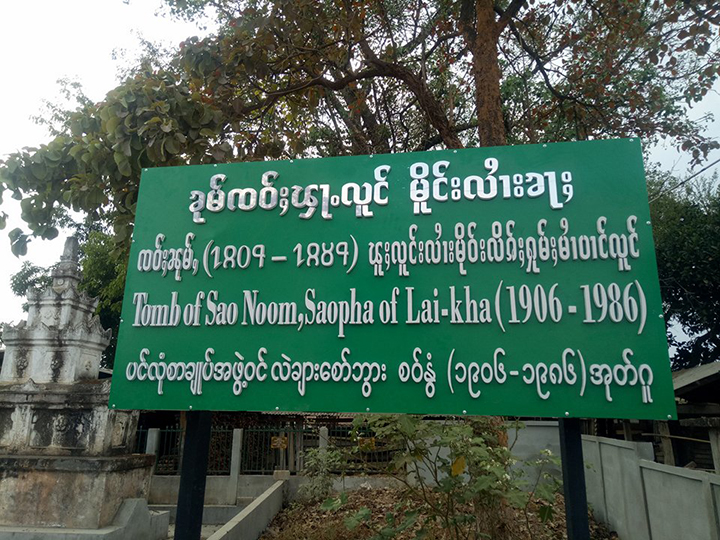After three years of maintenance work, young people erect a signboard at the tomb of Laikha hereditary prince Sao Noom.

Young people in Laikha, Shan State, have seen a signboard erected in three languages recognizing the tomb of the late saopha Sao Noom.
Area youth have spent three years maintaining and restoring the tomb, and revealed the new signboard declaring the name and title of hereditary prince Sao Noom in Shan, Burmese and English on Tuesday afternoon on-site in Ward 4.
“We had already established this signboard on March 28, but we removed it because elders and monks suggested that we add more descriptions, so we re-wrote it,” Laikha youth leader Sai Leng Hurng told SHAN.
The sign reads: Laikha Saopha Sao Noom (1906-1986), who is one of the signatory members of the Panglong Agreement.”
Sao Noom was one of the local leaders who signed the historic agreement in 1947 with Gen Aung San and ethnic representatives, promising equality in a future federal Burma.
“We already spent 4 million kyat (US$2,656) on the maintenance. Even as of today, it’s not completely done—there are small things left to do,” Sai Leng Hurng said of the tomb. “We have had to temporarily suspend it because our budget is gone. If we find donors, we will continue this maintenance again. We are thankful to all donors near and far, and the relatives of the saopha.”
Sao Noom was the son of Laikha Saopha Sao Khun Hleing, and was involved in the movement for independence for Burma from the British. His old palace has been transformed into Kawng Haw Kham monastery, which continues to function today and is home to an abbot and monks. The saopha’s former library and museum are attached to the monastery.



